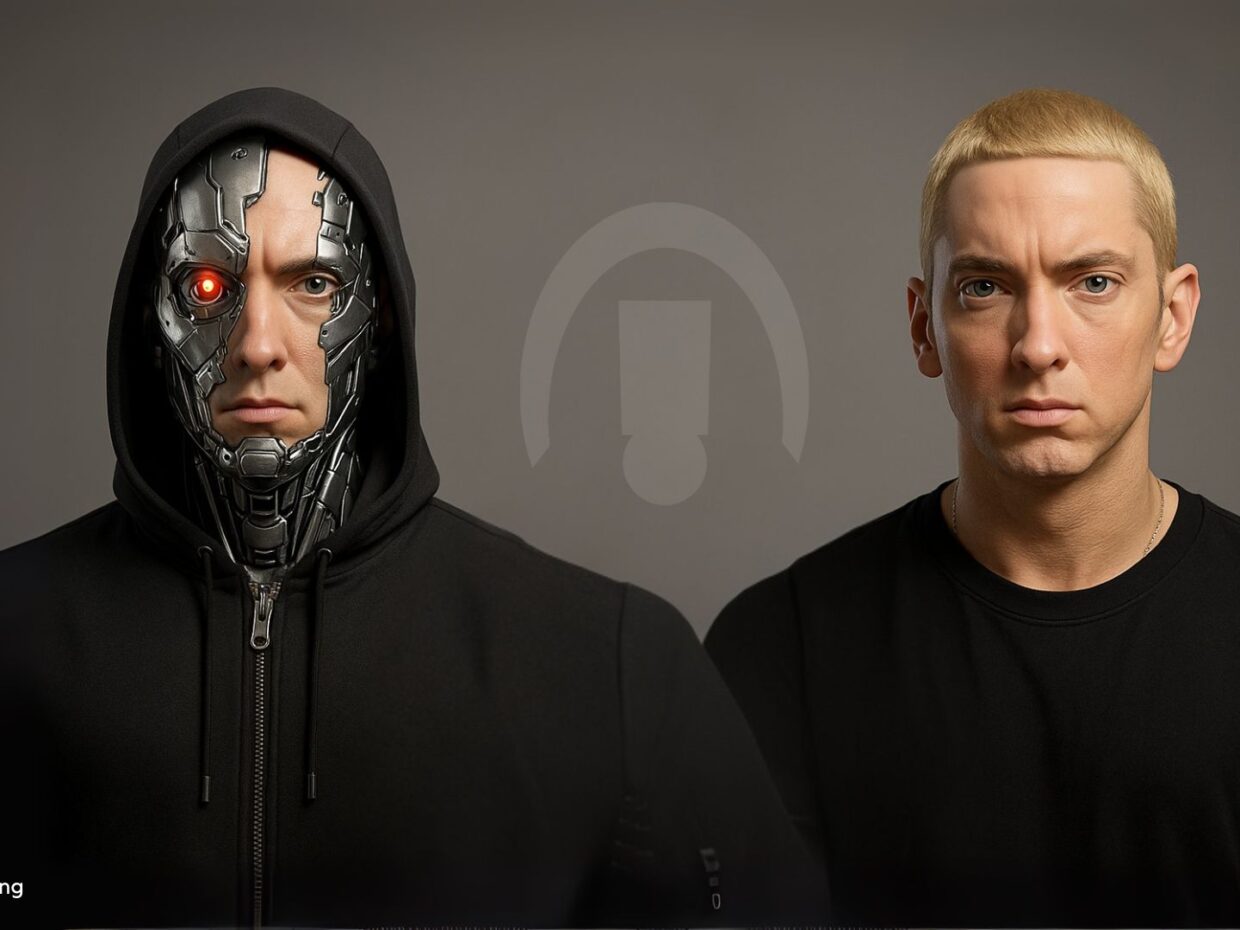Artificial intelligence is, in many ways, the great scoundrel of our age. The technology has barreled into creative spaces without checks, balances or any real regard for the fragile ecosystem of artistry. Right now, it feels less like innovation and more like the mass production of counterfeit creativity. And yet, every so often, an exception emerges that forces even the staunchest critic to pause.
Someone recently stitched together an entire mixtape of “AI Eminem” with the name Dope Sick. The creators didn’t just mimic Slim Shady. They did the unthinkable: they trained the machine to channel early-2000s Marshall Mathers with frightening precision. There are some glitches, but it truly sounds close to the raw, unfiltered Em that many fans still long for. Hardcore listeners immediately know it’s not Marshall Mathers. But to the casual ear, it sounds like unreleased material from a prime era, once thought to be long gone.
In the early 1900s, Walter Benjamin made a now-famous argument in The Work of Art in the Age of Mechanical Reproduction. He theorized once art is endlessly replicated, it loses its “aura.” He said that its unique presence was tied to time and place. AI Eminem, despite how it feels, has no aura. It’s just a damn simulacrum that tricked me—tricked us—into nostalgia. And that’s what bothers me.
This digital quandary raises existential questions for every creator. What happens when machines can convincingly replicate the artistic peaks of our icons? On the other hand, what if the real Slim Shady decided to use this technology as a mirror, a way to rediscover the old him, the cadences or some new demented inspiration? This is the messy reality of artistry smashing into the algorithm.
Hip-Hop, perhaps more than any other genre, feels the weight of this imposition. For decades, our MCs, DJs, producers, graffiti writers and photographers have embodied authenticity They are the “real”—both ethos and aesthetic. To inject artificiality into that lineage feels like a disruptive intrusion and almost sacrilegious. This Eminem project feels good even when you know it is technically wrong. There are no guardrails, no cultural referees. Timbaland has openly partnered with Suno to build artificial artists. And fans, some knowingly and some not, are consuming it all.
We’ve seen glimpses of this before. Remember Tupac’s hologram appeared at Coachella in 2012? It stunned audiences but a lot of us – myself included – felt technology trespassed on sacred ground. AI Eminem gives me the same unease. This new stuff isn’t resurrecting the past for a moment, it’s fabricating bodies of work that never existed. Sheeeeesh…
Unlike other genres, authenticity is a maxim in Hip-Hop. KRS-One once said that Hip-Hop is “our spirits made audible,” and that doctrine of realness mixed w artificiality feel especially jarring. AI can mimic flows, rhyme schemes, even attitude—but it can’t reproduce the lived experience, struggle or spirit that Hip-Hop has always demanded. And, if it could, would we want it?
So here’s the real question: if you could press play on an AI app and hear your favorite artist create brand-new “classics” in their prime voice, would you? Or would that betray the very essence of culture?
The road ahead is winding, bumpy and likely endless. There will be bad actors, opportunists and profiteers. But there will also be moments—like this strange AI Eminem tape—that force us to ask not only what we want from art, but what we’re willing to accept as real.
By the way, Eminem himself just dropped a new record, “Everybody’s Looking At Me.” And it’s actually pretty damn good. There’s hope.
